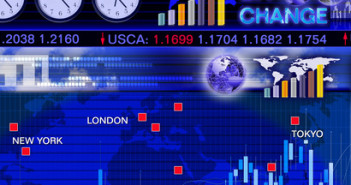After reaching a high of 91.18 during the Asian trading session, the USD.JPY has retreated from this lofty level as technical resistance and profit taking have seen the Japanese currency settle into the 90.70 trading region. This move off the highs is being looked as merely a technical correction to an already overbought situation.
The outlook for the USD/JPY remains the same. The near term target for the currency is at 91.80, but as we all know, currency moves are rarely a one-way street.
The World Economic Forum had their annual meeting in Switzerland last week and it provided a forum for some countries to voice their opinions. In fact, this meeting was so widely attended that Derek Jeter even showed up to voice concerns over “global warmingâ€. Japanese economic minister Amari was there defending the new Abe administration policy and stated that “depreciation of the JPY will revitalize the economyâ€. Japan looks for a moral side to its currency war.
He also stated that any misunderstandings that had been held by other governments were cleared up. There had been concern that Japan would be singled out at the G20 meeting next month for excessive weakening of their currency. I am sure there will still be comments made to that effect.
EUR
ECB Council member Coene had an interesting comment over the weekend. He likened the ECB’s as yet used OMT (outright monetary transactions) program to a nuclear deterrent. “Whenever you use it, that will raise new questions and new issuesâ€. No country has asked for a bailout yet, that would trigger bond buying by the ECB. Spain had need rumored to be looking at it, but the request never materialized. Coene, who is the head of the Belgium central bank also said it is now up to the governments of the Euro Area to generate growth, as the ECB “cannot solve underlying problemsâ€.
The EUR has traded in a modest overnight range, testing resistance at 1.3475 early in the overnight trading session, before falling towards support at 1.3425. It currently is trading near the 1.3450 level after EMU money supply data was released for December, showing a fall from 3.8% to 3.3% year on year, instead of the expected rise to 3.9%. Technically, the EUR remains in an overbought situation and a failure to re-test the highs could see some unwinding of long EUR positions.
This is a week that should see the USD reverse the trend it had last week, as economic data due out of the US should show that the economy is progressing in its recovery. The FOMC meeting scheduled for tomorrow and Wednesday will also help traders clarify the position of the US central bank moving forward and the comments by FED Chairman Ben Bernanke, will be closely watched. There is some expectation of an announcement of the end of the quantitative easing, although I think that is a little premature at this point.
USD/CAD continues to rally, as it briefly touched the 1.0100 level early this morning. Bank of Canada governor Mark Carney is scheduled to speak today in Canada and he is expected to address the move of the CAD dollar, as well as the internal issues that prompted the dovish comments from the Bank of Canada last week. Resistance for USD/CAD is now at 1.0115, followed by 1.0130. Support for the USD/CAD shows up at 1.0060, then 1.0030.
It looks like the last week of January will be one of considerable currency movement. With the FOMC meeting and the release of US non-farm payroll at the end of the week, coupled with the release of US economic data, traders will have enough on their plate to keep this week volatile.
Further reading: Euro-Crosses Could Extend Even Higher In Risk-On Environment – Elliott Wave Analysis



